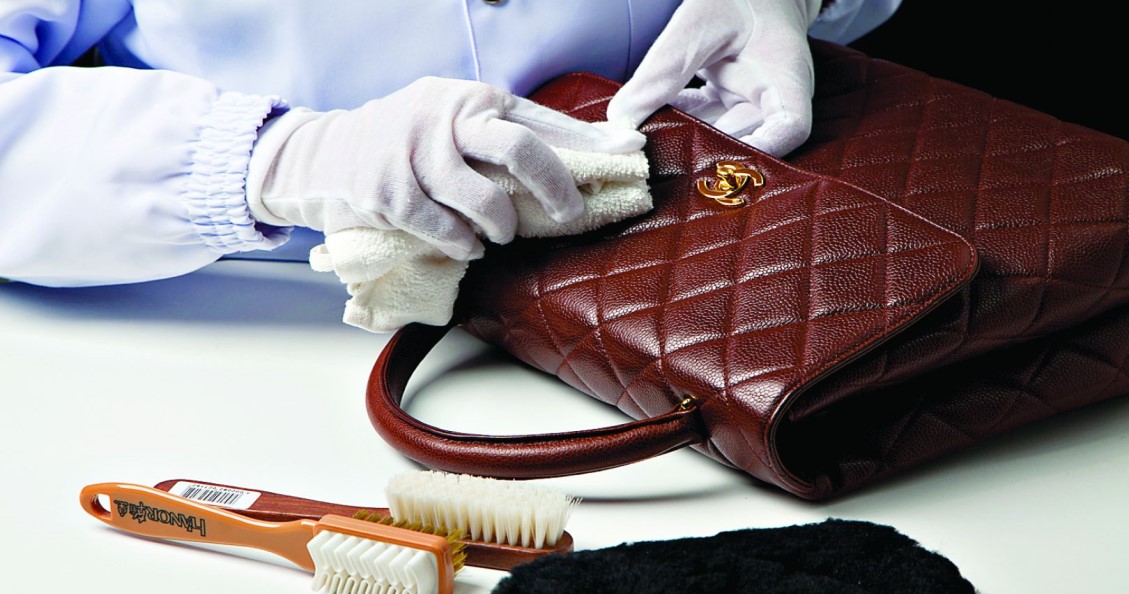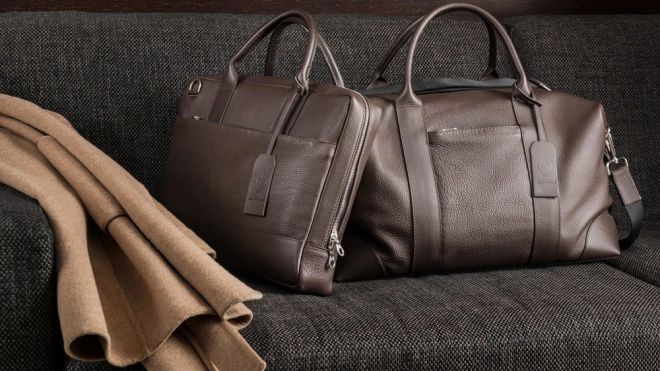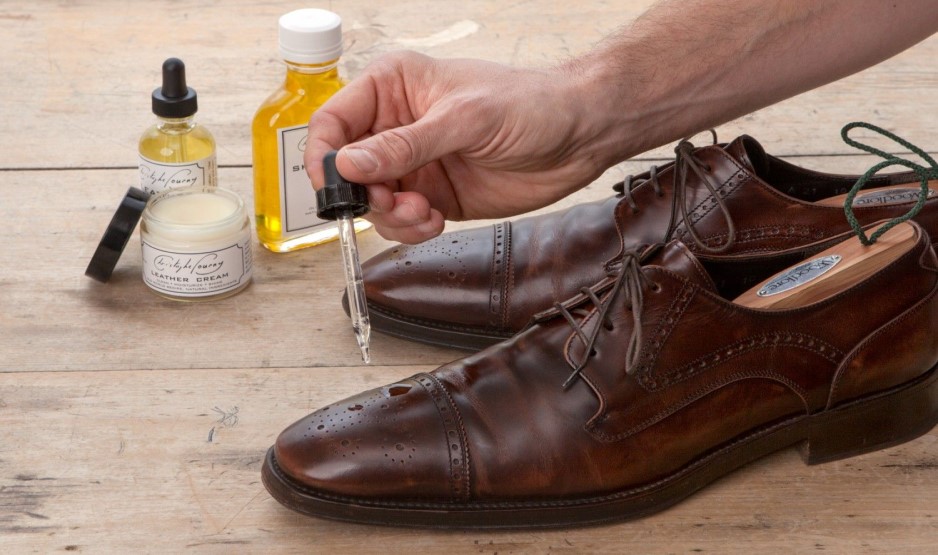Generally, leather products are durable and even more beautiful over time.
The witness for this claim is the leather items that remained from the old times.
Anyhow, they need care like the many other products.
However, following some tips can help them be new and stable regarding how to care. Those tips include daily maintenance, cleaning, and removing stains, including the white, ink, fat, chewing gum, salt, food, and blood.
One of the primary problems that occur for any leather is stains.
White stains can be removed by one cup of the mixture of alcohol and water with a rubbing cloth and let it dry afterward.
The soaked cotton with alcohol is used and rubbed gently in the inked area for ink stain.  Regarding Fat Stain, it is better to be taken and cleaned physically with a cloth.
Regarding Fat Stain, it is better to be taken and cleaned physically with a cloth.
Then, using the Talcum Powder, and after at least 4 hours, rub with a clean cloth to remove the extra humidity.
When chewing gum is stuck to the leather, and for removing it, a piece of ice is helpful.
For the salty stain, a solution including three parts vinegar and one part water using a cloth, and for bloodstain, Gypsum Powder is well to remove.
A water stain is not a big issue and free air is the answer.
However, leather products care is not limited to cleaning and avoiding stains, and more detailed discussions are needed, which are discussed in the following.
Luxury Leather Bags
According to the English proverb, "the more money you pay, the more soup you have, "everybody expects a luxury leather bag to last long.
Luxury bags are used in all seasons and occasions, and buying them is a kind of investment.
Although, its daily use means constant abrasion, which may blow up the dream of its prolonged use.
It is clear that the price is a sign of quality but does not guarantee to be everlasting. First, they have to be stored in a particular place and do not contain or are near acid.
If there is no specific place, putting some clothes inside to keep their shape is a good idea.
Putting newspaper to maintain its form is not right because of the possible ink leakage.
It is recommended to remove the straps and put them inside the bag because the metals inside may injure the outer cover, and if they are not removable, putting bags in upright and flat positions are a good way.
Moisture is another issue because molds may come with it.
To remove molds, cleaning them with a soft cloth and putting it in free air is the right way.
Buying an AC and dehumidifier are the other options.
Another issue is color leakage, in particular with colored leathers, patent, and suede, which may be away from the belongings.  In locations like restaurants and airports, using a bag cover is the right job to avoid the possible stains and dirtiness.
In locations like restaurants and airports, using a bag cover is the right job to avoid the possible stains and dirtiness.
The inner liner is also important because the items like pens, pencils, or cosmetics may damage it.
If the bag is made of suede, marks are always a possible danger, and a white eraser can remove them.
Rain is another threat.
The question is always: how to protect a luxury or ordinary leather bag from rain? Apart from the waterproof leathers, a rain or plastic cover is the right choice.
However, if the bag gets wet, it should be cleaned and dried by environmental heat.
Manufactured heaters are not being used.
Using a leather conditioner is the next step and one of the best cares for leathers.
Since the leather contains oils, it may lose it over time.
The leather conditioner is a kind of oil that feeds the leather fibers and prevents them from drying and shrinking and is available in the market in a leather care kit.
In case of conditioner unavailability, how to condition the leather bag at home? The answer is easy: the baby oil is a suitable substitution.
Leather Waterproofing cream is another way.
It is a mixture of virgin olive oil, beeswax, and water.
By using a clean and soft cloth, the mixture is rubbed and covers the outer of the bag.
Leather Shoes Care
Despite the kind of leather made of, from full-grain, nubuck, or suede, Like the other leather products, leather shoes need special care to last longer.
Cleaning and conditioning are the primary actions.
Cleaning with a soft brush is the best way to remove dust and dirtiness.
Another cleaning step is to use mild soap and saddle soap, whether finished or unfinished leather.
For suede, the problem is at the time of winter, since winter comes with mire and water, both enemies of suede.
If there is dust on the suede, using a special brush is a choice.
If there is a permanent mark on it, water steam and a special cleaner are recommended.
Using wax is the next step for shoe care.
However, there are two critical factors for using wax: Drying the shoes and the polish quality.
Using a conditioner and protector is the next step.
The shoe's keeping place is also essential.
It should be clean and away from dust and direct sunlight, not warm and free-air circulation.  A shoe bag helps prepare those conditions for shoes.
A shoe bag helps prepare those conditions for shoes.
A shoe tree is a perfect solution for maintaining the primary shape of shoes.
Daily use of shoes is not a good idea because shoes have to rest and breathe like human skin.
A solution containing Vinegar, water, and soap is for shoe moisturizing.
Of course, Vaseline is also a good choice for the above purpose.
Olive oil is for recovering the color and minor marks on leather shoes.
Leather Furniture
Because of staying in one place and being in a well-ventilated area, the leather furniture is naturally more minor than the other leather and experiences fewer scratches, heat, friction, and even direct sunlight (because of existing curtains and screens in houses).
For those reasons, the way of their care is different.
The first notable point is its leather kind.
It is more expensive than the protected ones and more vulnerable to stains if it is unprotected.
The other types of unprotected leather are pull-up and nubuck, both qualified ones.
The unprotected leathers are generally weaker and stainable than the protected ones but more natural, and sitting on them is equal to comfort and pleasure.
The other kinds of furniture leathers are protected and semi-protected ones.
The protection here means layers of polymer and pigment inside, making them more robust against stains and environmental factors and more durable.
We need some simple things and tools for cleaning the furniture, like a brush, water (distilled), soft clothes, mild soap, and leather conditioner.  However, just airing with a clean cloth is enough for unprotected ones.
However, just airing with a clean cloth is enough for unprotected ones.
Heavy detergents are forbidden, and gently cleaning is recommended for all ones.
Regarding stains, for unprotected leather furniture, because of their natural softness and vulnerability, it is better to do nothing and call the producer to remove stains.
According to the types of stains and their colors, there are different remedies for protected ones, from distilled water with a soft cloth to gentle soap.
Conclusion: Leathers are one of the most used products globally and are vulnerable.
Therefore, some care is needed to make them more durable.
In this article, the common problems of leather products have been addressed.
Then, it has been tried to discuss some unique leather products in detail.
All those discussions have been based on our many years of experience in the leather field.
We are still learning and proud to be long-life learners.

0
0